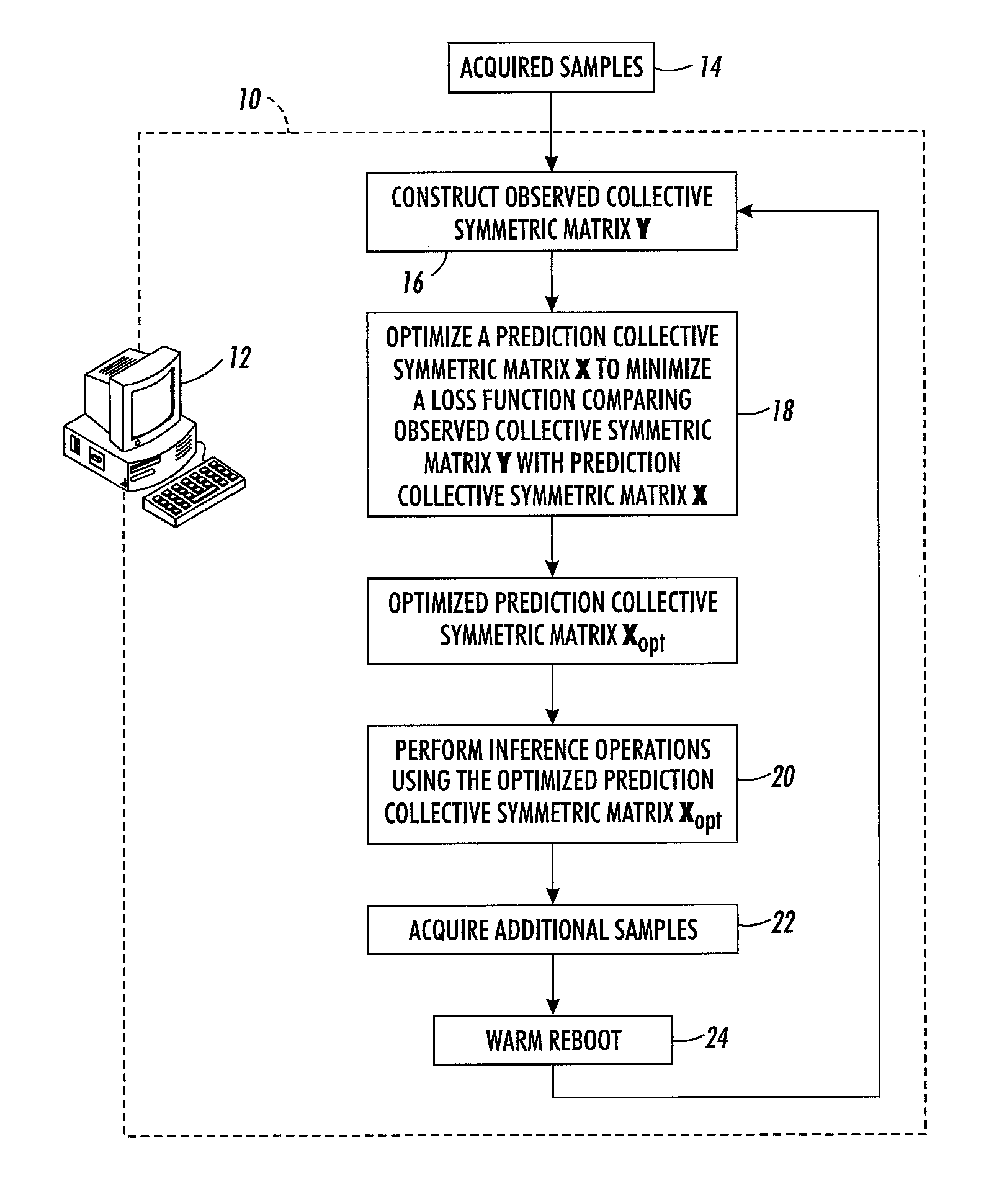Convex collective matrix factorization
a collective matrix factorization and convex technology, applied in the field of collaborative filtering arts, can solve problems such as unreliability of prediction, unfavorable user-rating relationship, and difficulty in predicting a new user with no rating history,
- Summary
- Abstract
- Description
- Claims
- Application Information
AI Technical Summary
Benefits of technology
Problems solved by technology
Method used
Image
Examples
Embodiment Construction
[0016]With reference to FIG. 1, an inference system 10 is implemented by a computer or other electronic data processing device 12 that includes a processor (e.g., microprocessor, optionally multi-core) and data storage and that executes instructions to perform operations including: in an operation 16, constructing an observed collective symmetric matrix Y storing observed relationship data between pairs of entities for E entities of K different entity types where K is greater than or equal to two with nk entities belonging to entity type k for k=1, K and E=n1+ . . . +nK, the observed collective symmetric matrix Y being a symmetric matrix with E rows for the E entities and E columns for the E entities; in an operation 18, optimizing a prediction collective symmetric matrix X that is also a symmetric matrix with E rows for the E entities and E columns for the E entities in order to minimize a loss function comparing the observed collective symmetric matrix Y with the prediction collec...
PUM
 Login to View More
Login to View More Abstract
Description
Claims
Application Information
 Login to View More
Login to View More - R&D
- Intellectual Property
- Life Sciences
- Materials
- Tech Scout
- Unparalleled Data Quality
- Higher Quality Content
- 60% Fewer Hallucinations
Browse by: Latest US Patents, China's latest patents, Technical Efficacy Thesaurus, Application Domain, Technology Topic, Popular Technical Reports.
© 2025 PatSnap. All rights reserved.Legal|Privacy policy|Modern Slavery Act Transparency Statement|Sitemap|About US| Contact US: help@patsnap.com



